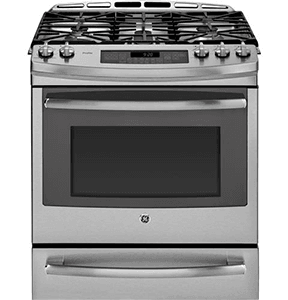Why does my new oven take such a long time to preheat?
The facts behind why modern ovens heat up slowly.
If you’re reading this article, you are likely worried that something is amiss with your new oven. ‘Preheating shouldn’t take this long,’ you’re probably telling yourself. ‘Our old oven never took this long to preheat, did it?’
Relax, you’re not crazy—many folks are asking the same question—and before you let buyers’ remorse take hold, read on for answers to your questions.
Why does preheating take so long?
Newer ovens usually have hidden heating elements to simplify the chore of cleaning, since it’s a pain to clean around heating elements. If you don’t see any raised heating element at the bottom of your oven cavity, then it’s a safe bet that your heating elements are hidden. The downside to this new feature is that your heating elements are now housed in hollow spaces within the walls of the oven cavity, which means the heating element must heat up a larger volume of air, and it can no longer heat up the main cavity as directly as it did before. Inevitably, it’s going to take longer to achieve an even and consistent temperature in your oven.
Do I have to wait until the oven is preheated to start baking or broiling?
Of course not—you bought the oven and can do whatever you please—but for the best results, you’ll be rewarded if you wait. There’s more to cooking with an oven than raising the temperature. For dishes to cook evenly and consistently, it’s essential that the temperature is equal in all corners of the oven. Pockets of cooler air disrupt the cooking process, and you may end up disappointed with the results. It may even add more cooking time than you’d accounted for, and you may ultimately lose the time you gained not waiting for the preheating to finish.
How can I make my oven heat up faster?
There’s no trick to heating your oven faster, but you can realign your expectations and prepare for a longer preheat. From now on, allot 25-30 minutes for your oven to preheat. If you plan on starting your baking at 6 PM, set yourself a reminder to start your oven’s preheat at 5:35 PM. This is going to save you a lot of frustration and concern going forward, and it may prove to be less of an inconvenience than you imagine it’ll be.
If you own a more expensive oven, know that it features thicker walls for better energy efficiency and cooking performance. Those thicker walls require more time to preheat, though, so add an additional 5-10 minutes to our above recommendation for a high-end oven.
Isn’t 25-30 minutes of preheating a waste of energy?
It’s important to understand what’s happening when you preheat your oven. Once you fire up that preheat, your oven will heat up as fast as it can to the desired temperature. Once that temperature is achieved, your oven will cycle on and off to maintain that temperature. The temperature will swing greatly during the initial cycles, but those swings will get smaller and smaller with each additional cycle of the oven. When you preheat for a 25 minute cycle, you’ll be optimizing for ideal baking performance in a modern oven.
Higher-quality ovens, once they reach the desired temperature, will require fewer cycles to maintain heat, thanks to those well-insulated walls that took so long to heat up in the first place.
Did we help? Still got problems?
We hope that these answers provided some peace-of-mind and advice for achieving better results with your new oven.
On the other hand, if you’ve read this and 1) you still think there’s a problem, and 2) you live in one of our service areas, please give us a call or schedule an appointment online to let one of our appliance repair heroes put your mind at ease.









